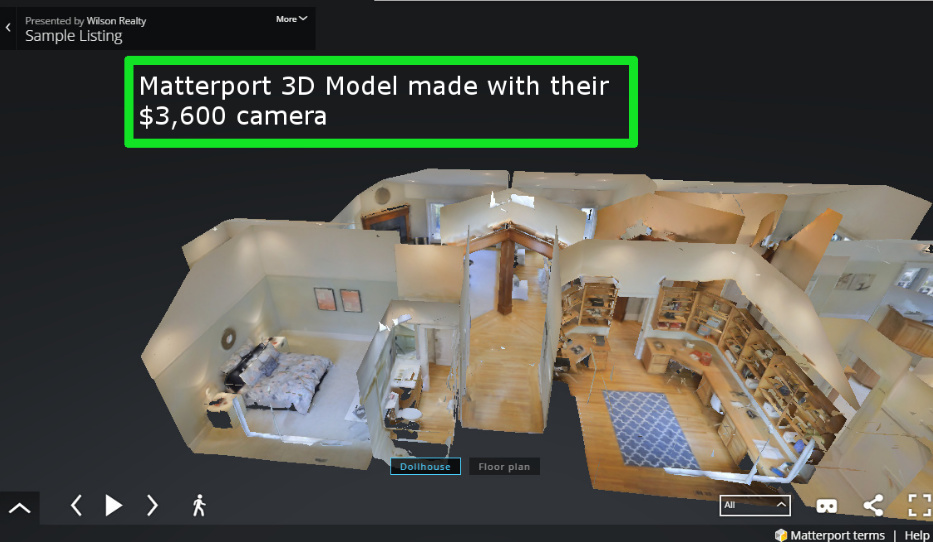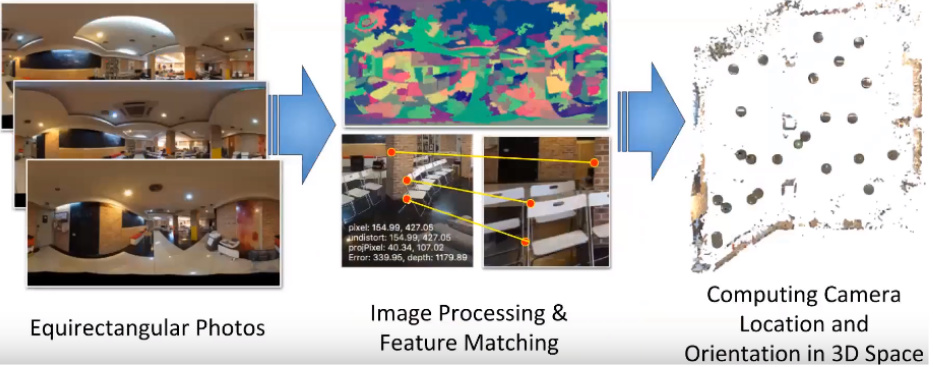
Cupix
Cupix Brings 3D Virtual Experiences to the RICOH THETA
3D model made with the RICOH THETA V and Cupix
I recently spoke to Shawn Choi and Scott Anderson about their company Cupix, located in Sunnyvale, California. Cupix provides a cloud-based service that allows you to upload your pictures taken with the RICOH THETA and transform it into a 3D tour. The service is currently in Beta and is free to use.
You can easily edit and tour the 3D images using a browser.
Cupix editor with images from a RICOH THETA V.
Making a tour with Cupix and RICOH THETA V images
By combining the RICOH THETA with Cupix, you can provide your real estate clients with something similar to Matterport at fraction of the price. I previously wrote about the $3,600 Matterport Pro 3D camera in the article Real Estate Business Opportunities for THETA Applications.
Matterport 3D model using expensive proprietary camera. Source: Matterport
3D model made with the affordable THETA V and Cupix
Scott at Cupix claims that Cupix is actually more scalable than Matterport. He let me know that the Cupix team just mapped out a large convention center that is larger than the size of building that Matterport can handle. Note that I haven’t confirmed this limitation with Matterport, but it’s great that Cupix can handle large buildings.
Cupix promotes the following 6 features:
- Cloud-based 3D software. No need to install heavy software locally.
- 360 photos integrated with the 3D mesh
- 4D tracking (time-based tracking of images. See past scenes in construction.)
- Collaboration
- 360 videogrammetry (interact with a 360 image tour and explore the 3D mesh)
- Offline support of 3D tours
Advanced Cupix Technology for 3D Model Creation
Cupix engineers have 20+ years experience with 3D vision and 3D graphic model creation. They’ve commercialized advanced 3D graphic technology for use with affordable cameras like the RICOH THETA V.
Extensive Testing with the RICOH THETA V
Cupix performed extensive testing with the THETA V, including using the THETA V with a stabilization gymbal.

Measurement and Floorplans
As Cupix can map out a 3D model, their technology can calculate distances using a reference measurement in a picture. The 3D model can also be aligned to a floorplan.
Shawn at Cupix sees opportunity in the real estate and construction industries, an opportunity that we’ve already seen proof of with the THETA S.
Limitations
Unlike services like HoloBuilder and StructionSite, Cupix does not offer a mobile app that connects to the THETA V. Their workflow is currently not as optimized for construction compared to HoloBuilder or StructionSite. It’s also not clear how the Cupix workflow integrates into common industry applications such as Bluebeam Revu. All of these areas can be overcome with manual processes or future software upgrades from Cupix. The software is under rapid development and you should check out their site to see the current feature set.
Summary and Final Opinion
Cupix has advanced technology that opens up new possibilities for THETA owners. The service is currently free to try in the beta period and worth exploring. Cupix tested their system with the THETA V. As they are still in beta, they do not have mobile apps to optimize common industry workflows for construction or real estate. You’ll need to use the official THETA mobile app to take the pictures and then upload the pictures to the Cupix servers yourself. Due to the lack of a dedicated mobile app from Cupix, I imagine that the primary use for THETA owners would be a one-off project for a hotel, construction site, or convention center. When Cupix develops mobile apps optimized for a single workflow like construction or real estate, I anticipate that their advanced technology will make it attractive to many managers for use by their staff. It’s definitely a service worth checking out and assessing if you can use it in your business projects. Shawn suggested that you subscribe to their Facebook Page for updates on status. He indicated that they’re preparing some great virtual tours to explore.









